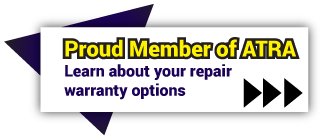For years, auto diagnosis was fairly straightforward. If the car wasn’t running right, you gave it a tune-up. When the brakes wore down, you replaced them. The transmission stopped shifting? You rebuilt it. Simple.
Today’s transmissions operate based on signals from dozens of sensors, sending signals through miles of wiring, to as many as 10 different computers. And if that’s not enough, those computers then have to share information with one another, or the whole system collapses.
How has this changed automotive diagnosis? Consider this: About half the cars that come in with “transmission” problems don’t have anything wrong with their transmissions. The problem is being caused by a computer system failure.
There are three tiers for diagnostic fees:
- Tier 1 – Verifying the Complaint
During the first tier, we go over the details of your complaint, and try to verify them under actual operation. This may include a basic visual examination, checking the fluid level and condition, and a thorough road test, if possible.
First tier diagnosis is always totally free, regardless of the problem. - Tier 2 – Isolating the Source
The second tier is to determine whether the problem is inside the transmission, or in one of the external systems that affect its operation.
You won’t be charged for second tier diagnosis if (a) the problem is inside the transmission, and (b) you agree to have us perform the repairs.
Any other conditions involve billable diagnosis.
Second tier diagnostics usually take between 30 minutes and one hour. - Tier 3 – Pinpoint Diagnosis
In most cases, third tier diagnosis only takes place if the condition is being caused by the computer system, or one of the external systems affecting transmission operation. Because of this, almost all third tier diagnosis is billable.
Third tier diagnosis usually takes between 45 minutes and two hours, but can go longer depending on the problem.
No one likes to spend money on diagnosis. But a well-planned diagnosis can actually save you money.

